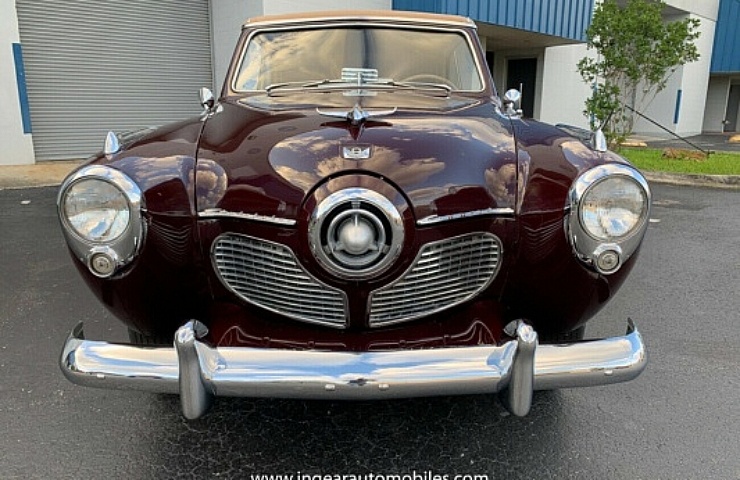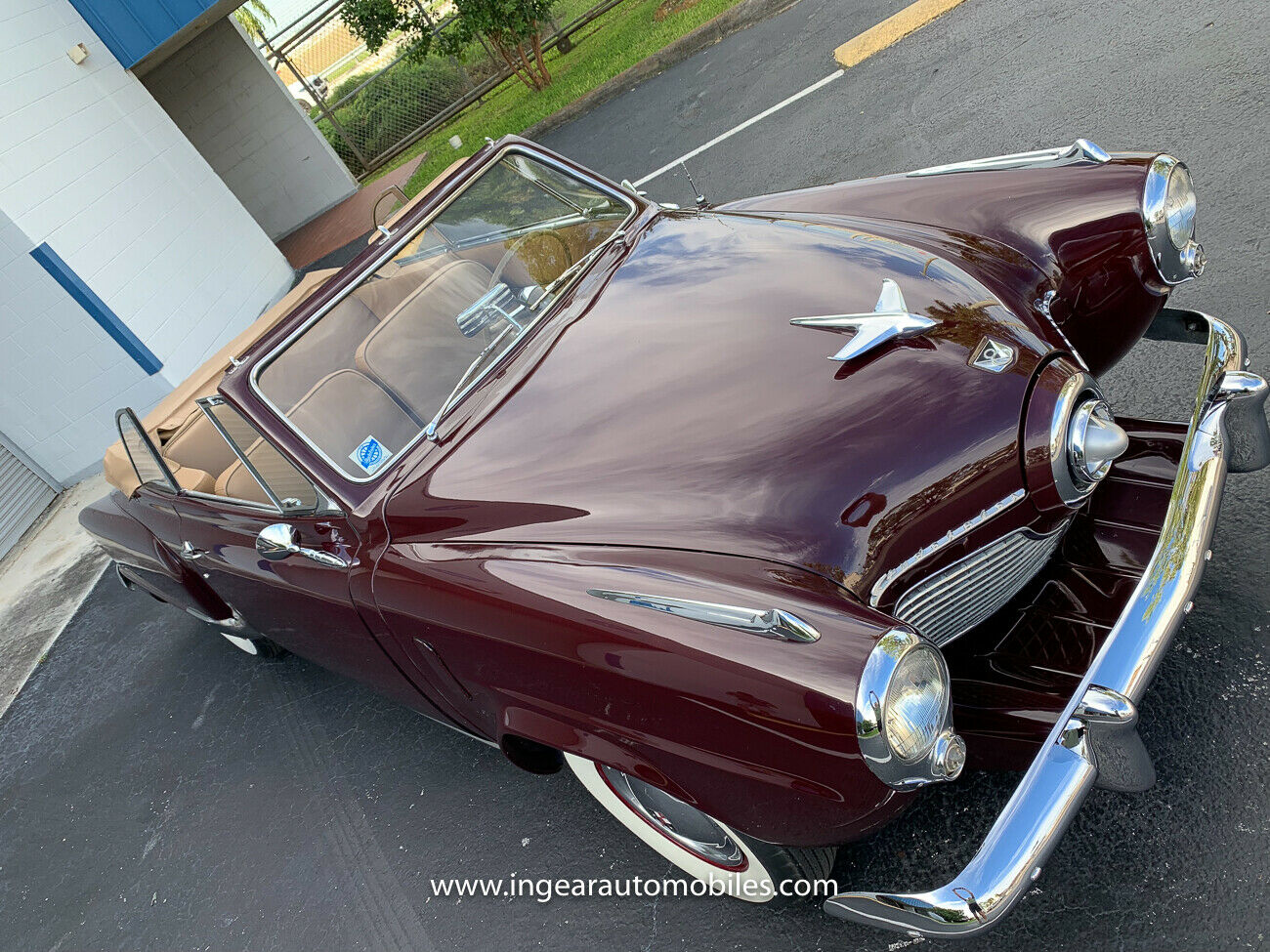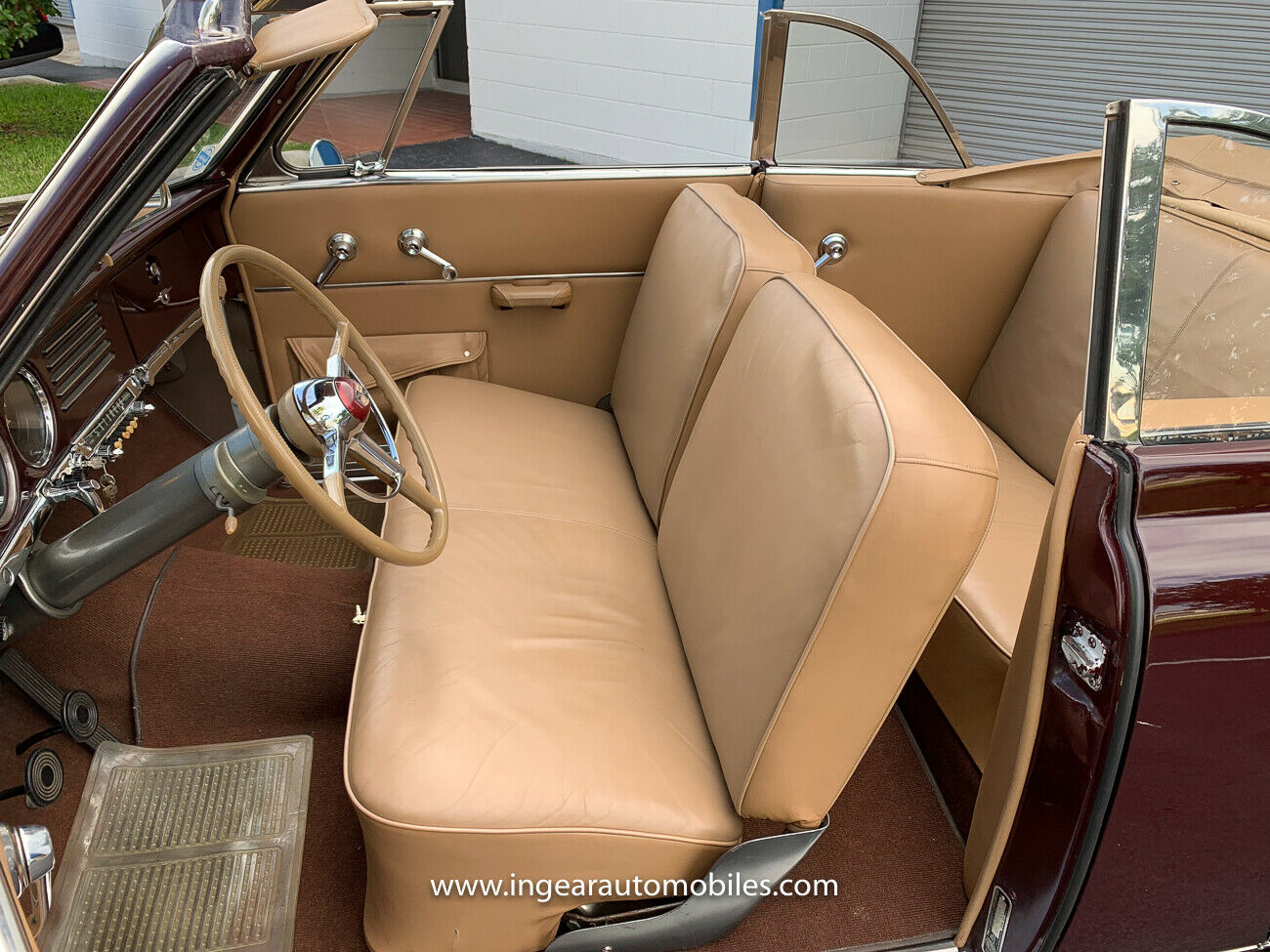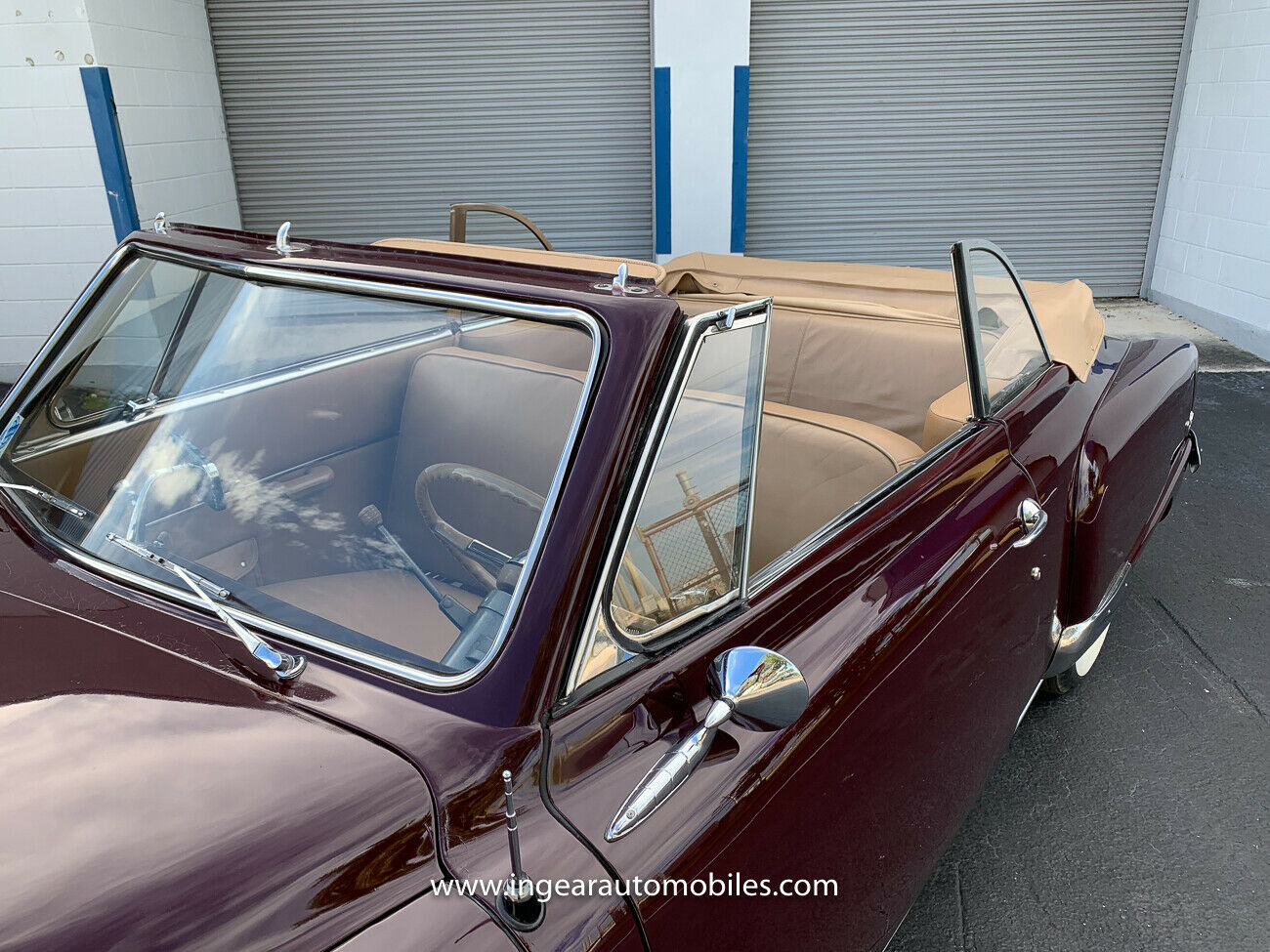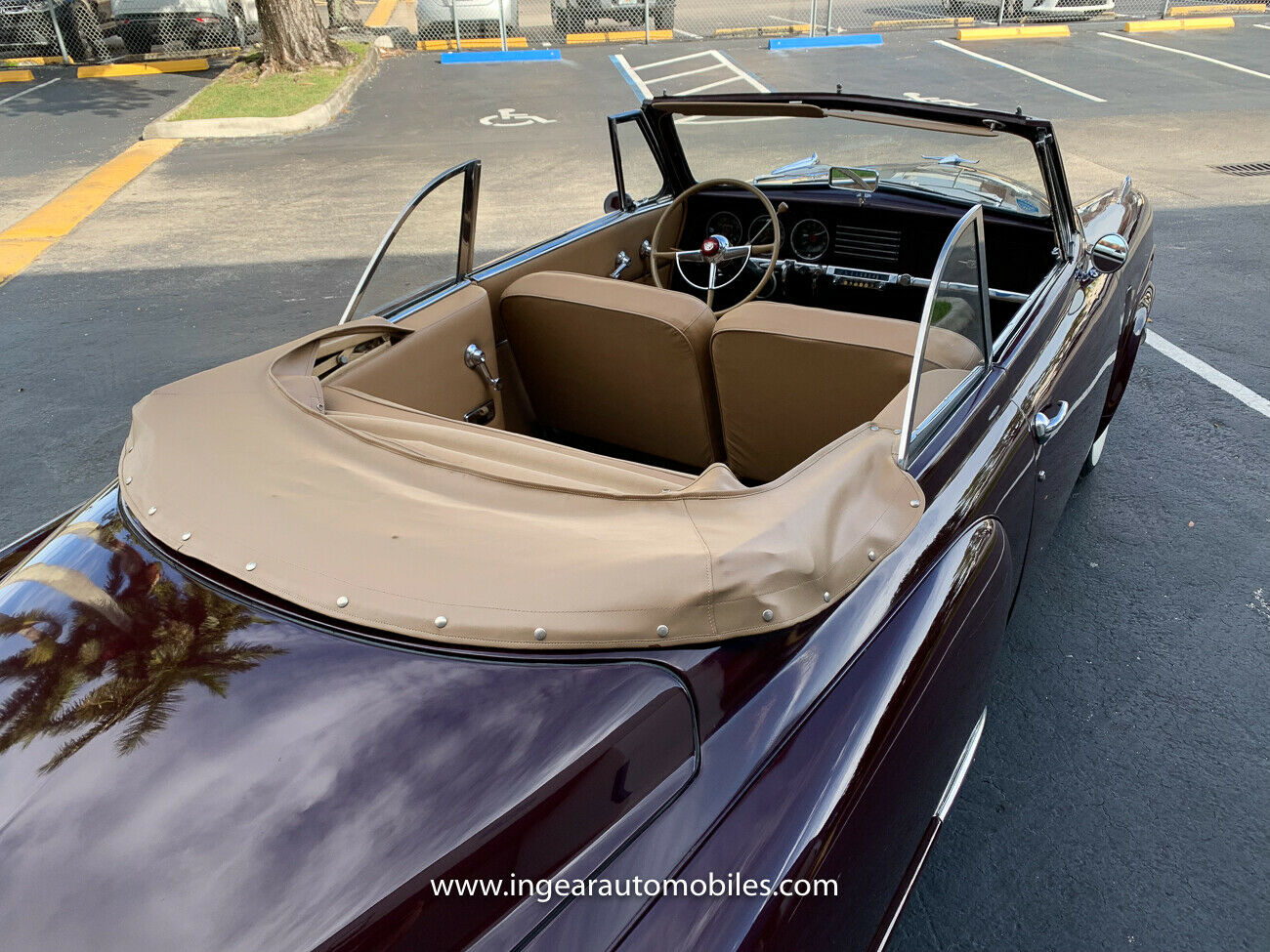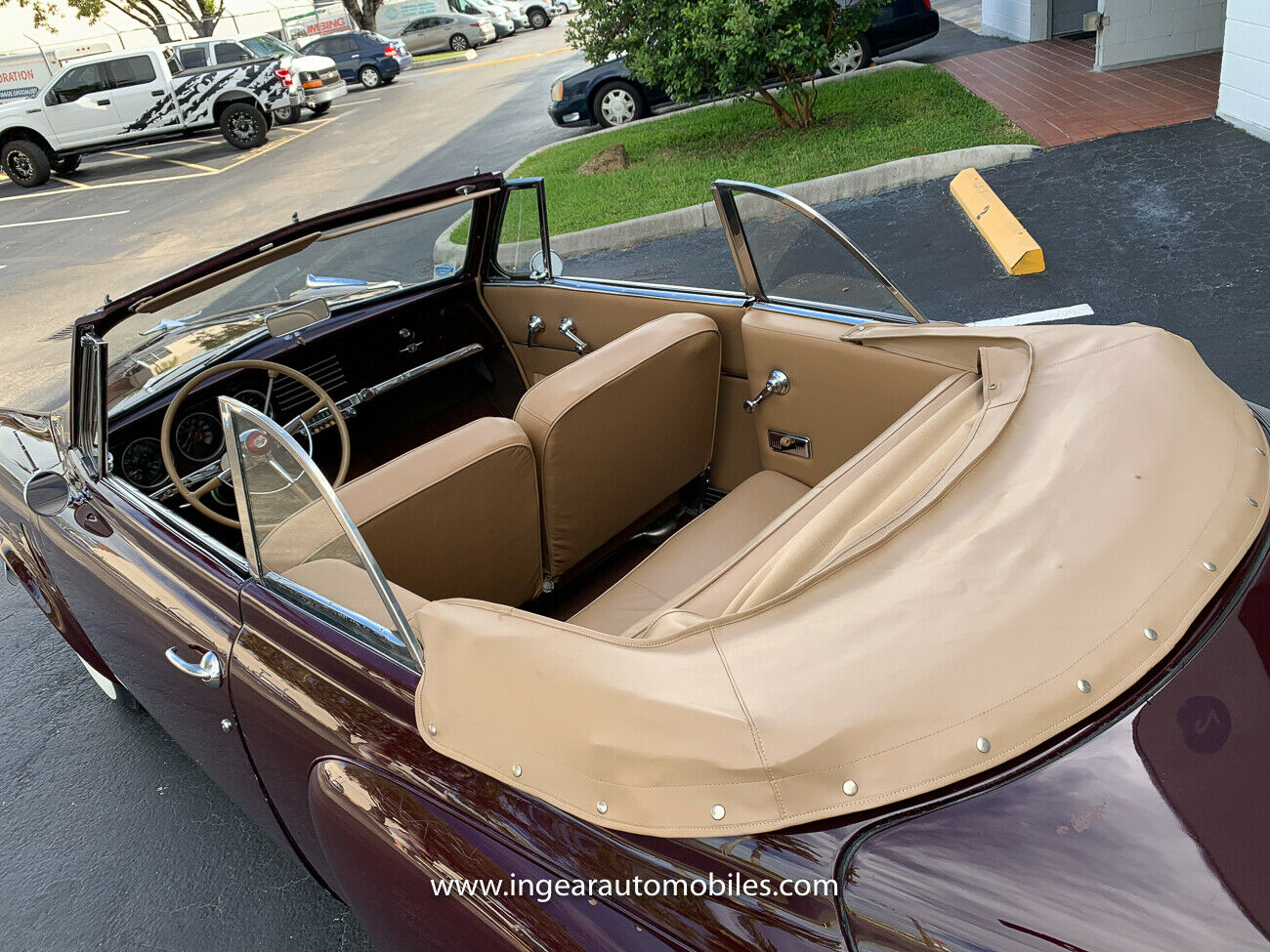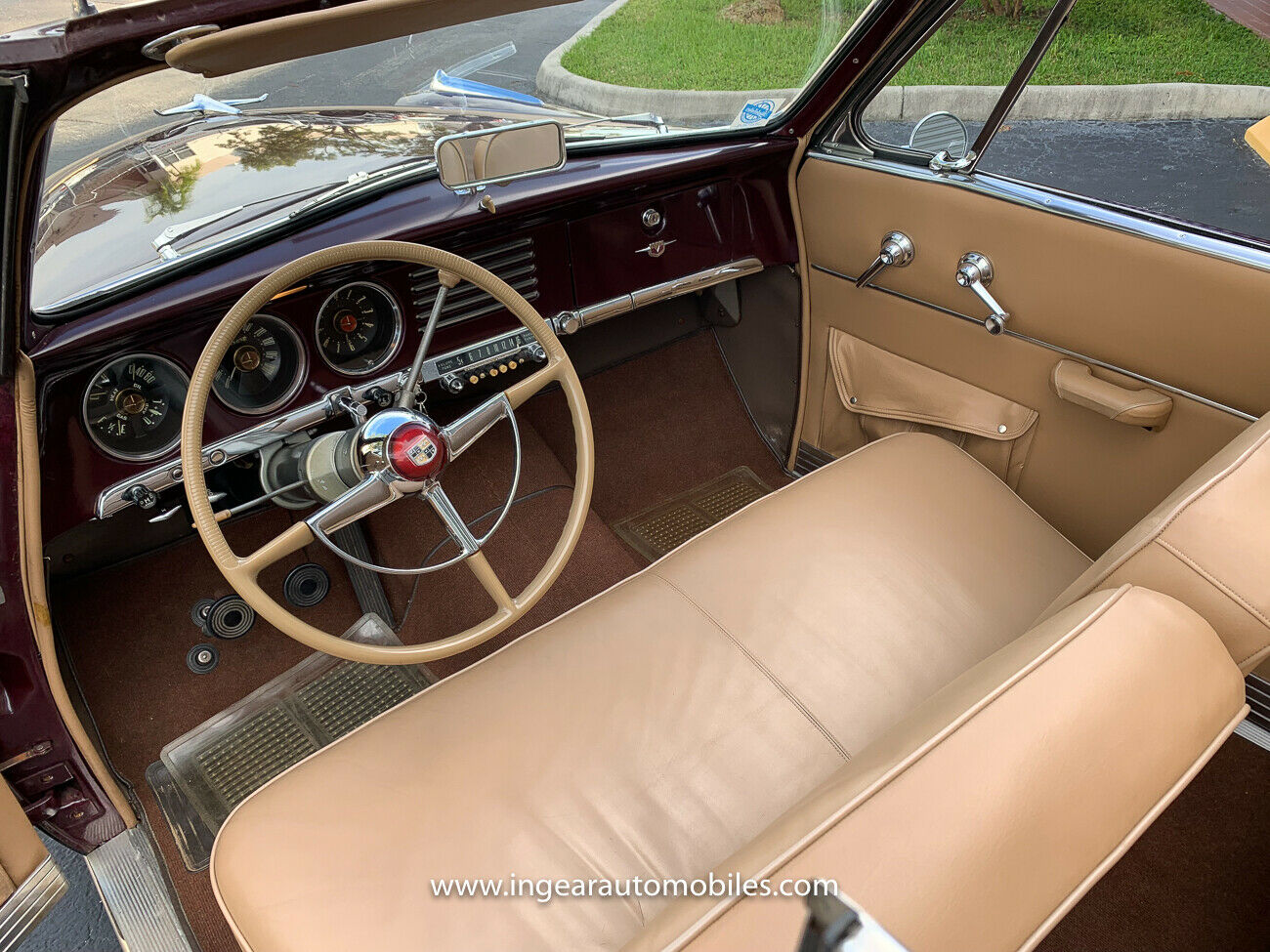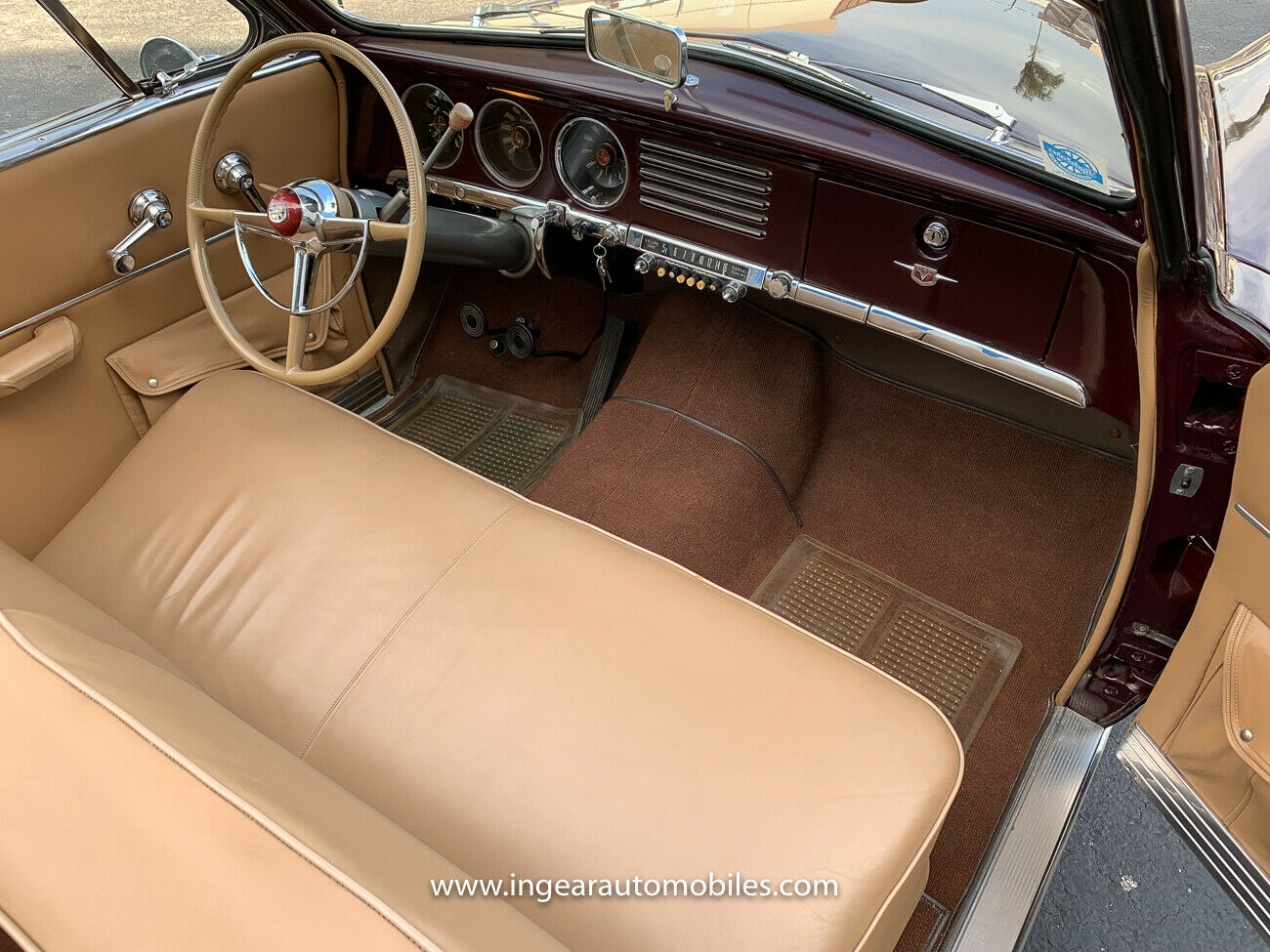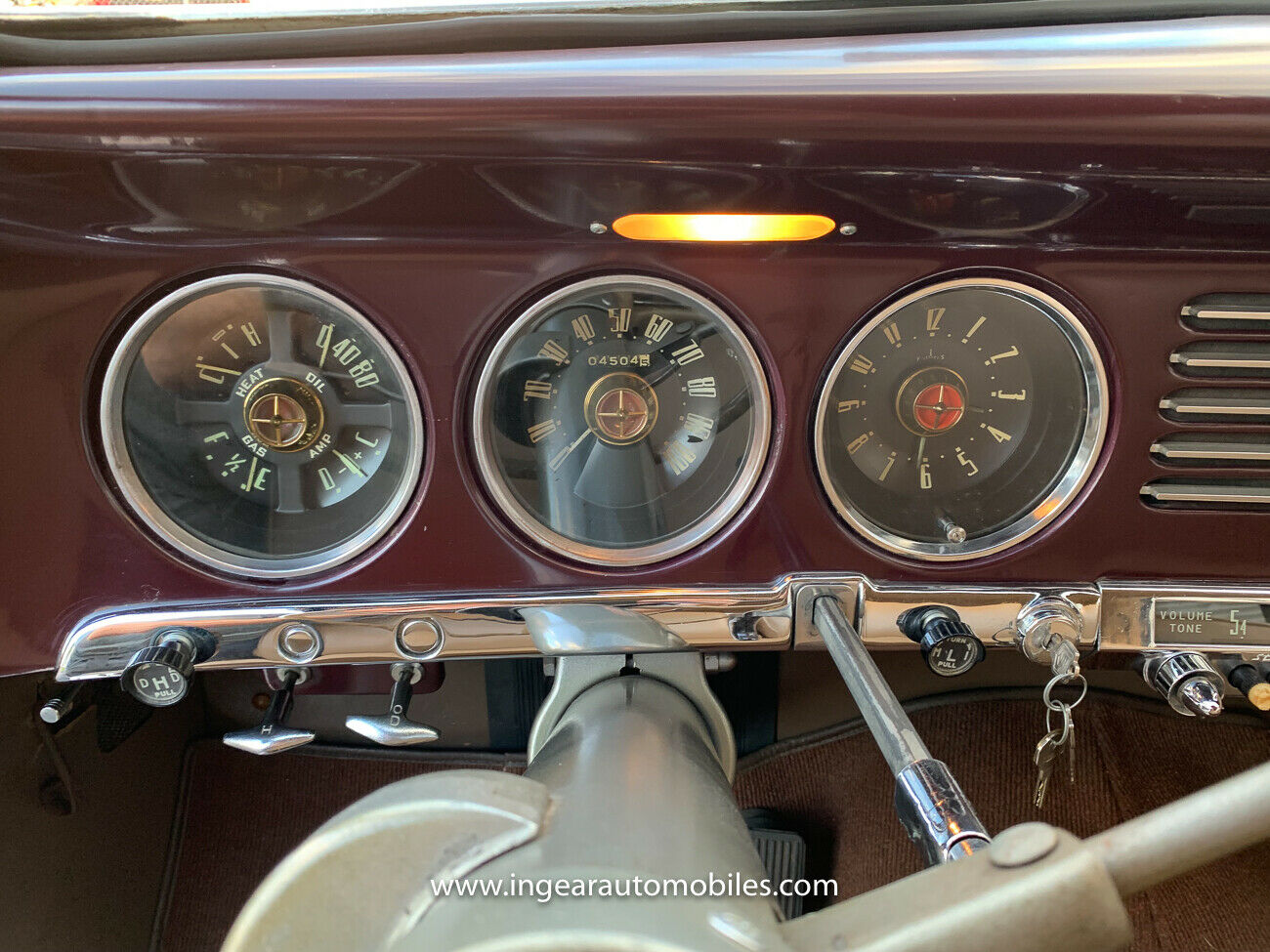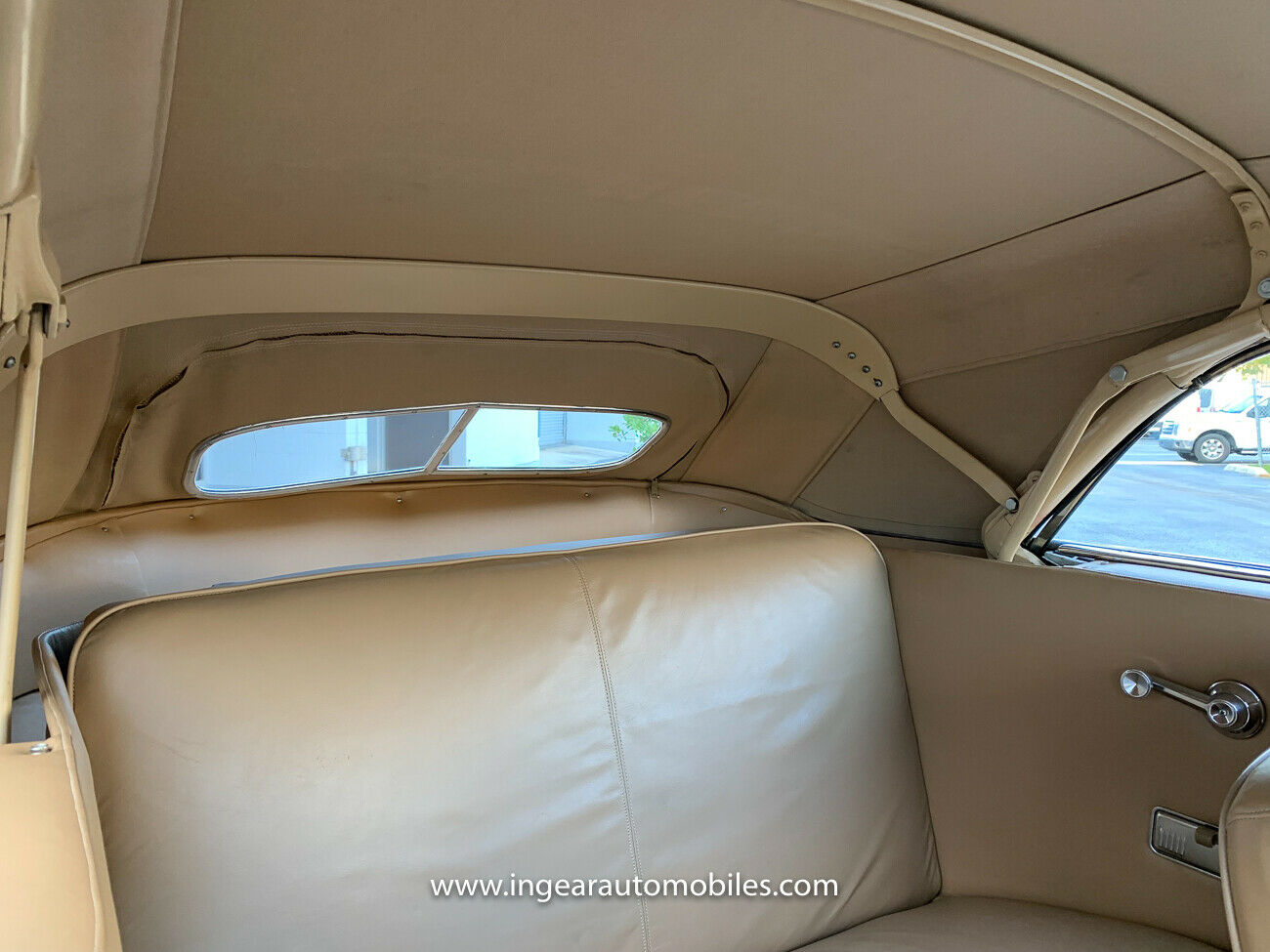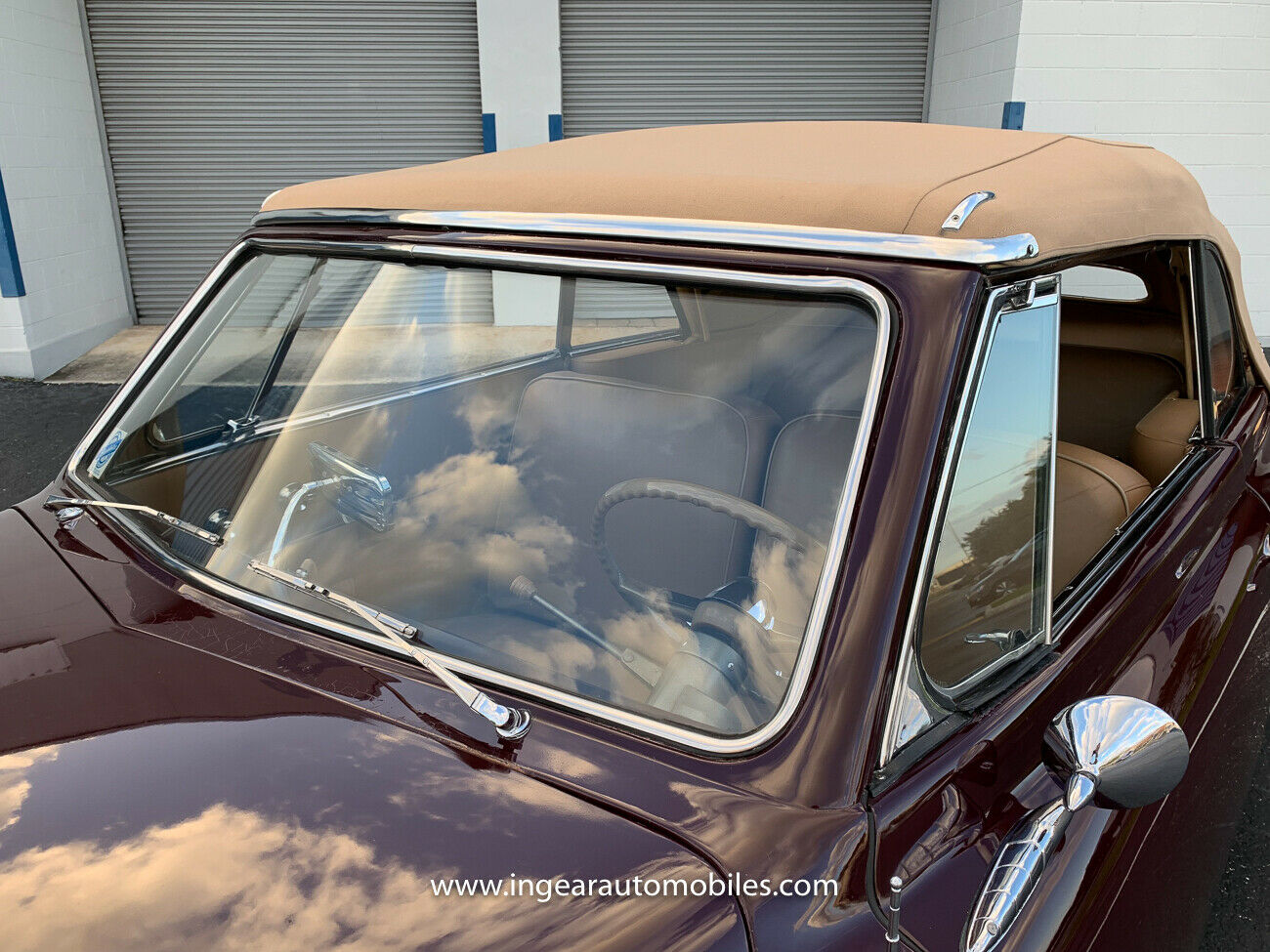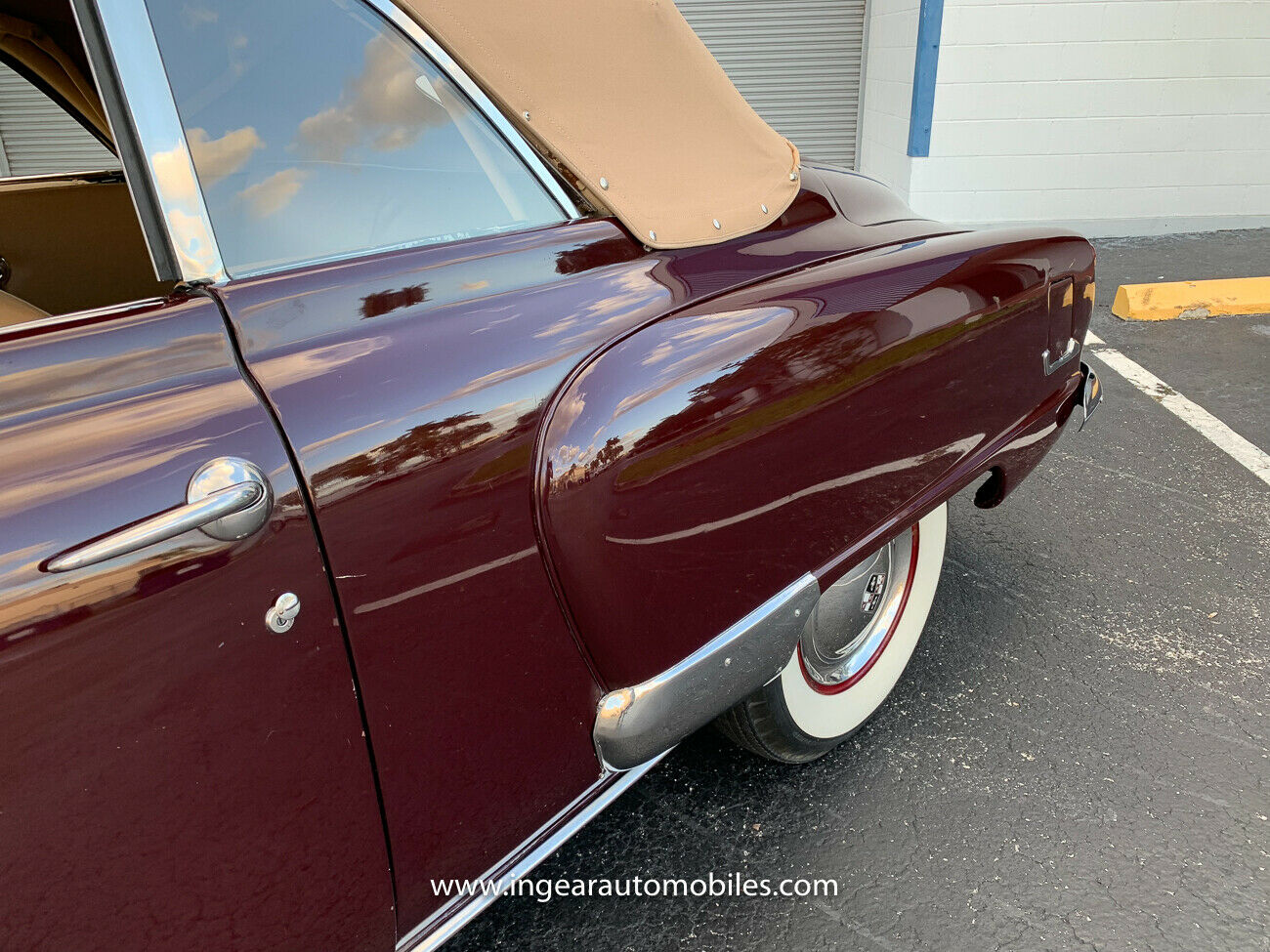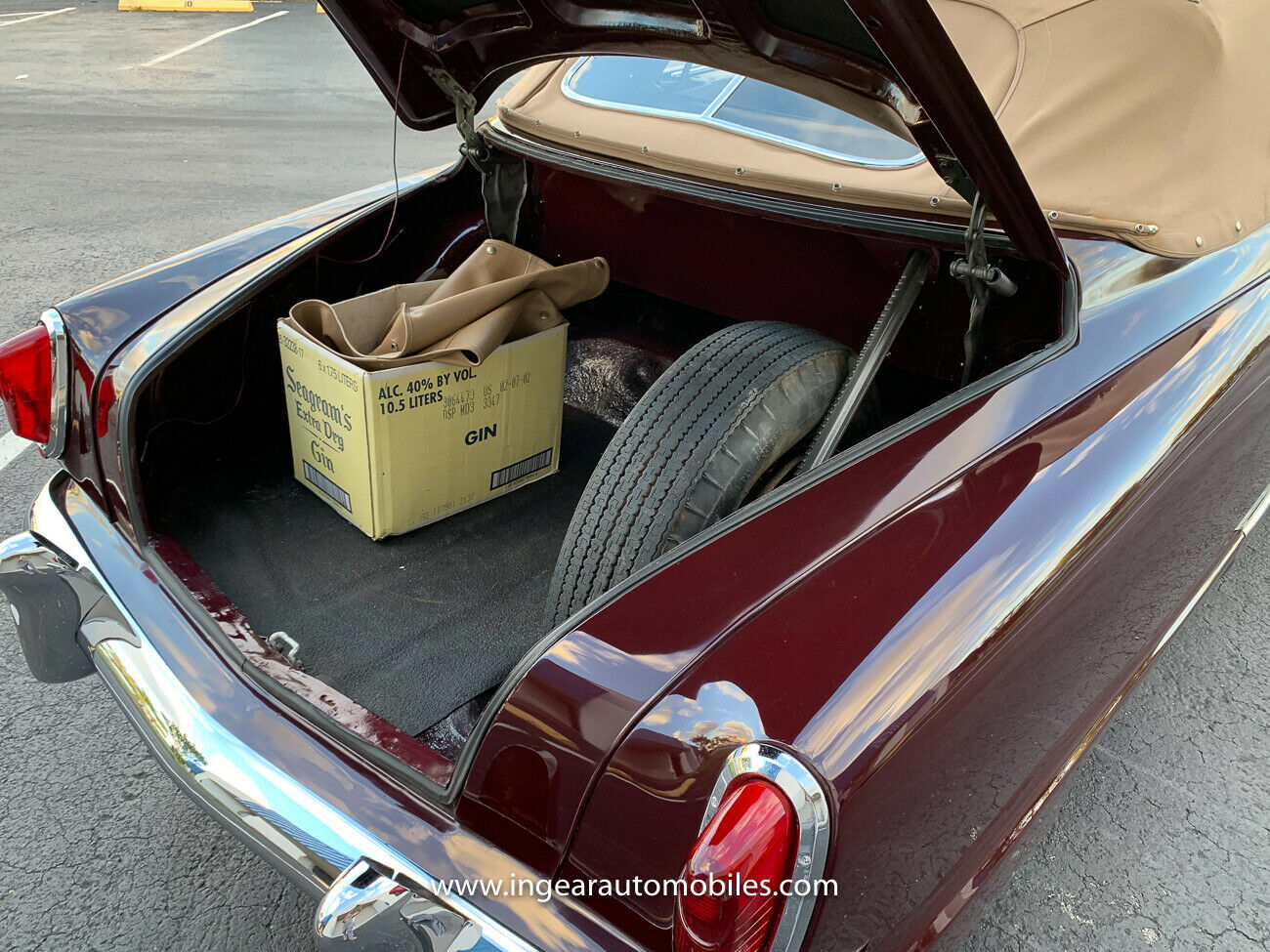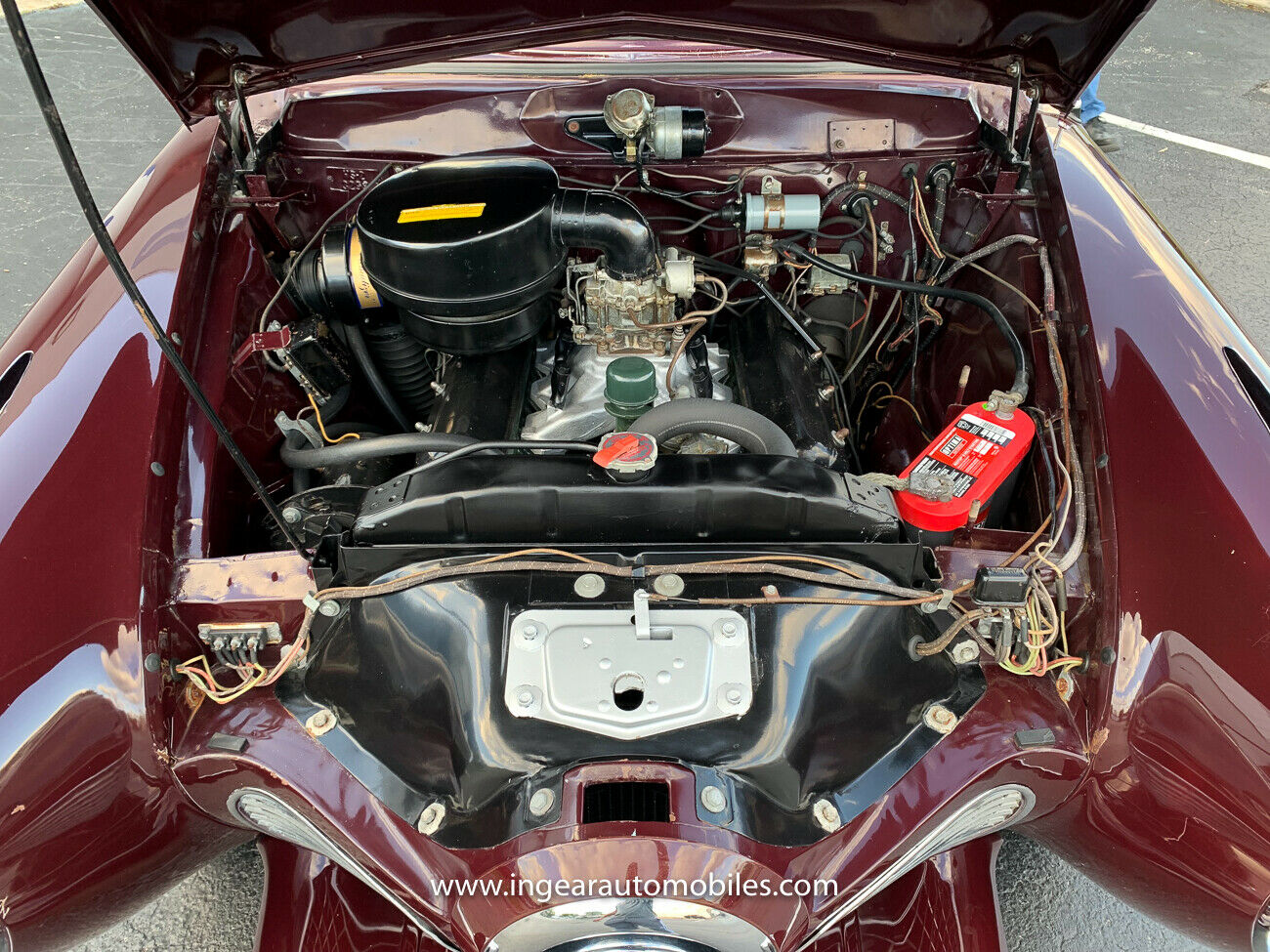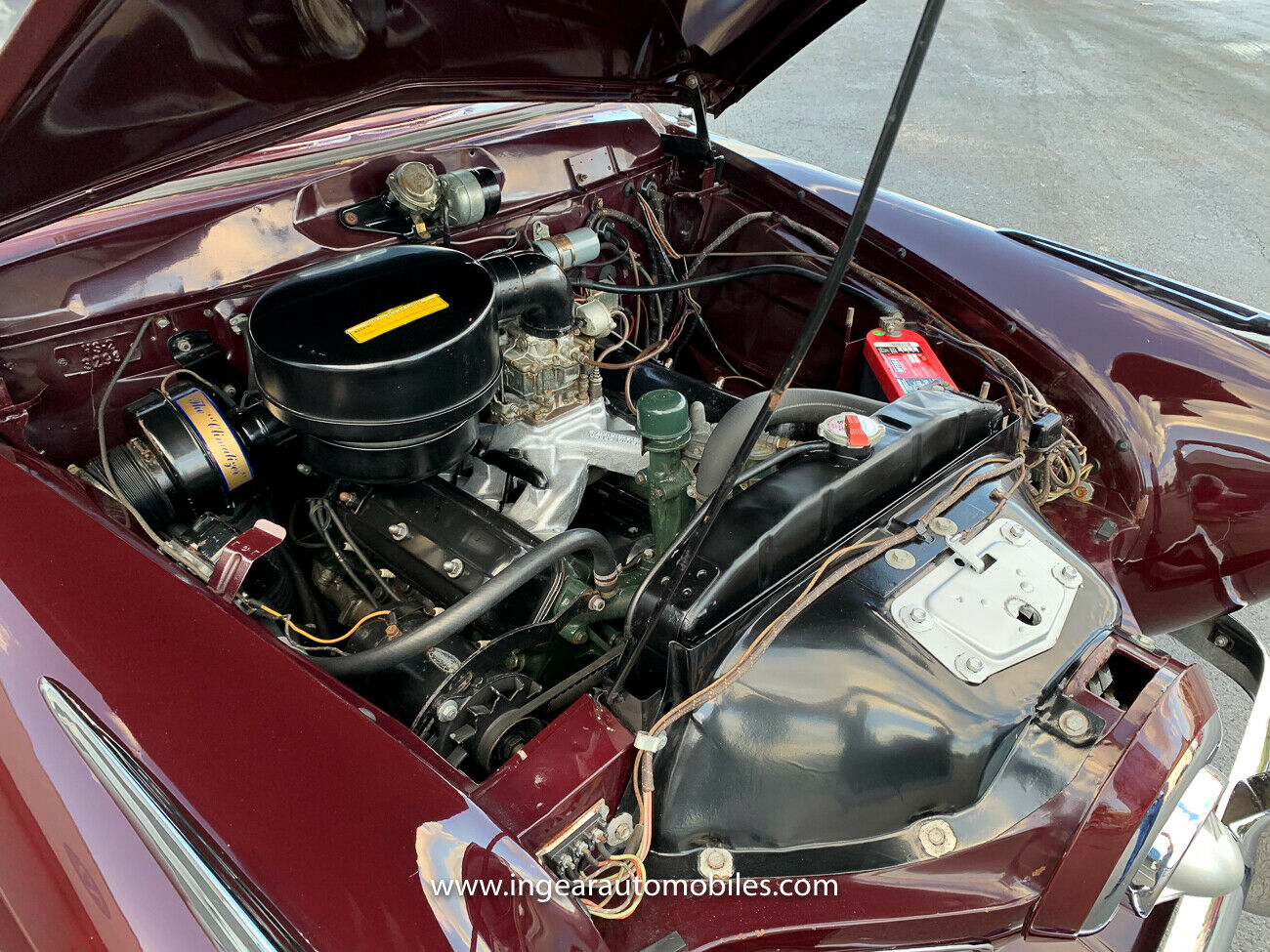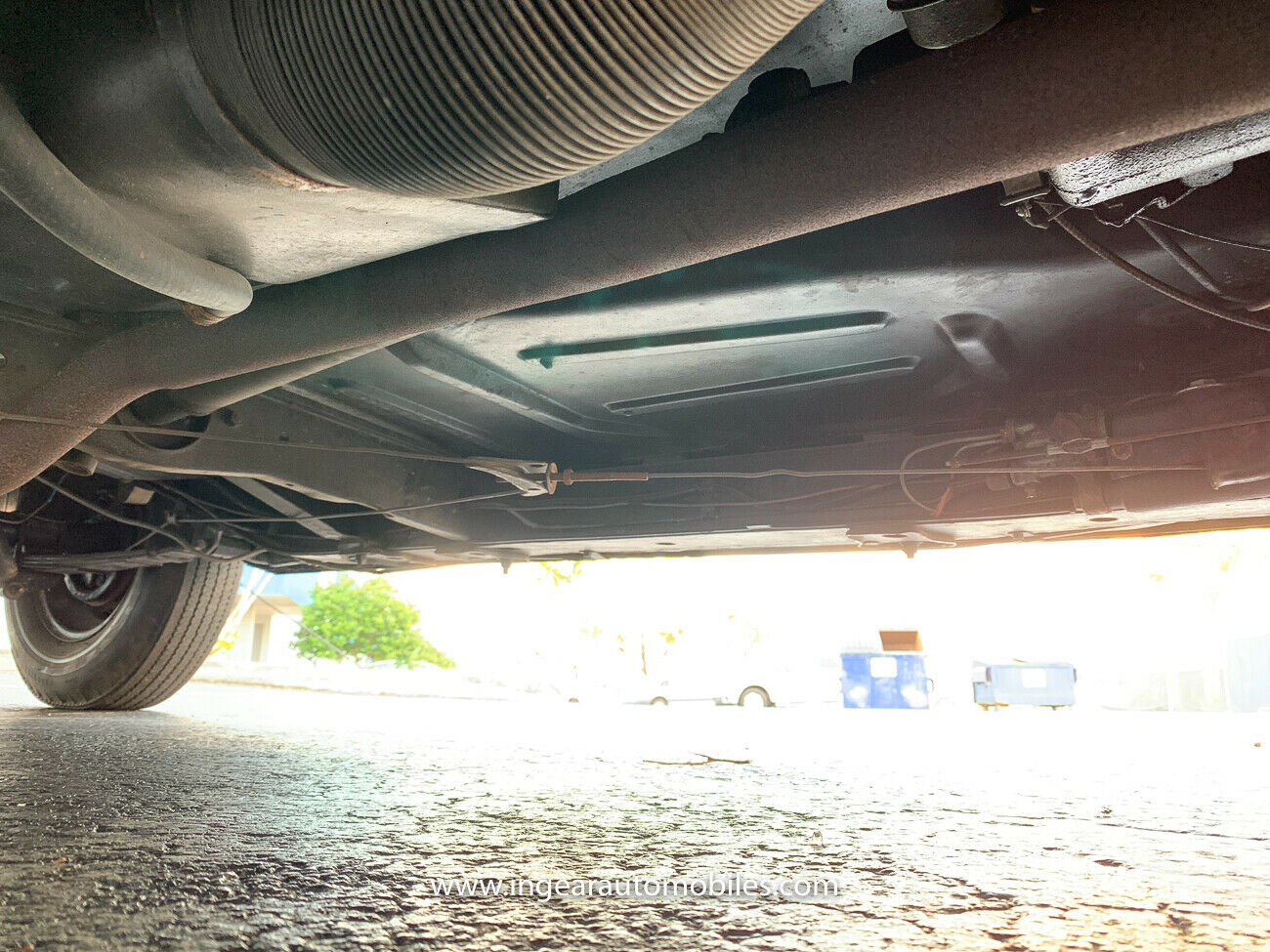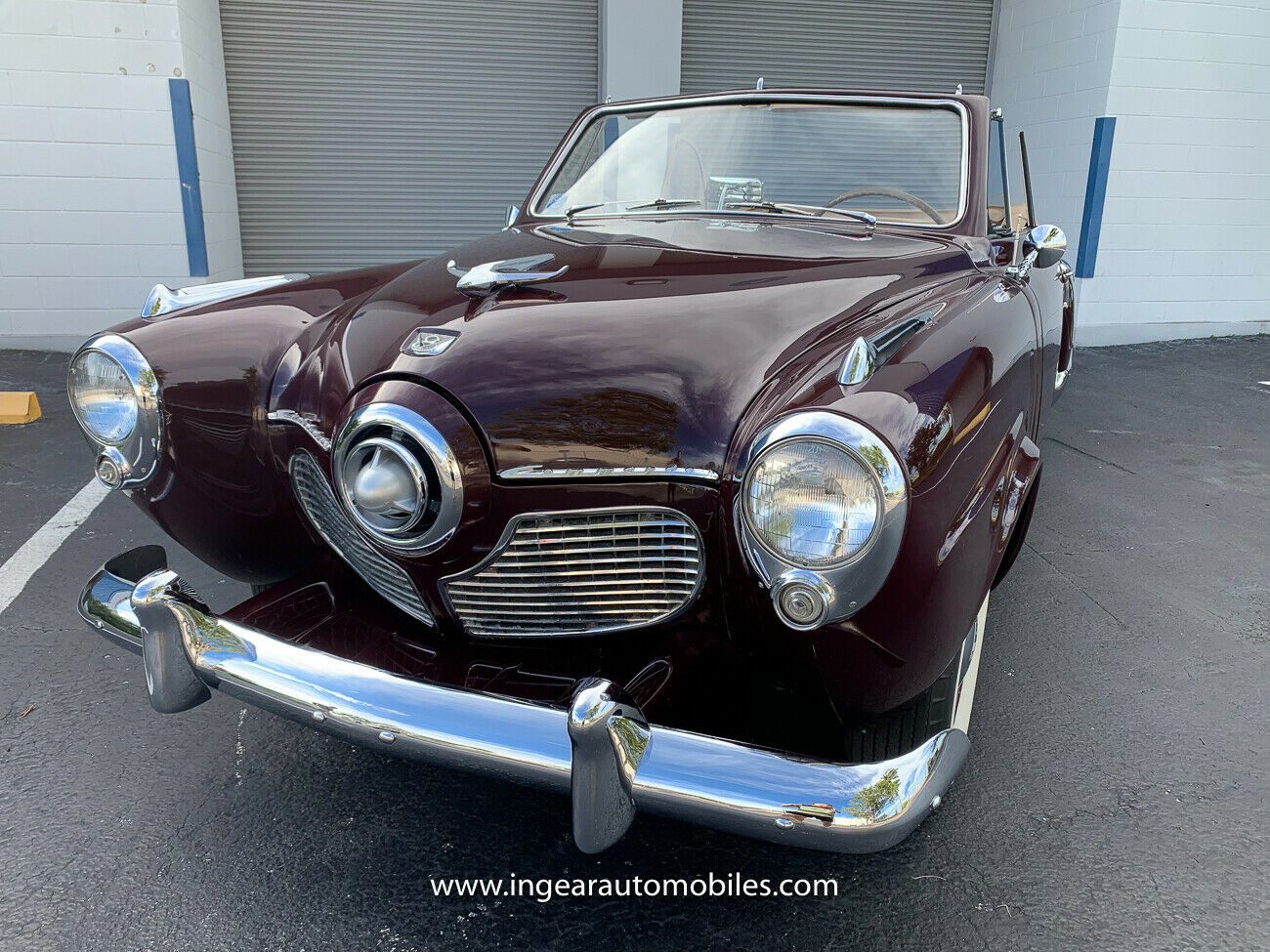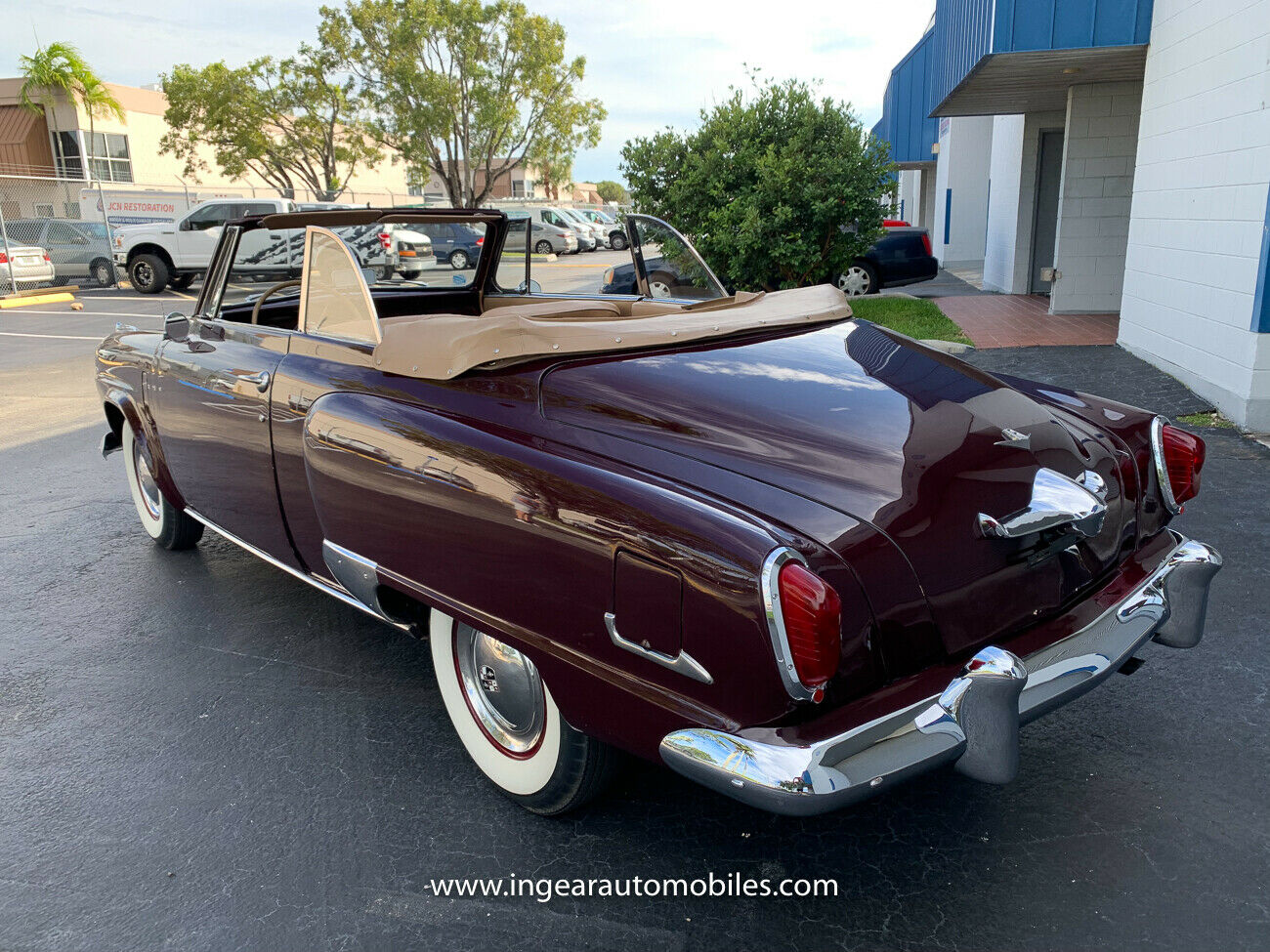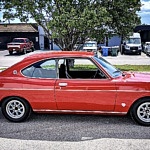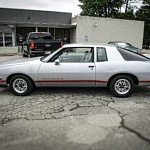In the early 1950s, even people who didn’t notice cars could spot the Studebaker from a mile away. That aircraft-inspired “bullet nose”—used in 1950 and 1951 only—is instantly recognizable. A classic example of the bullet-nose Studebaker is for sale now on eBay.
The 1951 Commander convertible was fully restored. It has an attractive color combination of burgundy with a tan interior.
The Commander has a 232-cubic-inch V-8 under the hood, coupled to a three-speed column manual with overdrive. The owner recently tuned the motor, but the car’s restoration took place about a decade ago. The exterior chrome is good, and all trim is present.
The interior looks totally period. The convertible top—with a very cool split glass rear window—was renewed with the frame painted to match the top color. The factory AM radio and jack/spare combination are in place.
Buy It Now on eBay
Studebaker’s “New Look”
A classic collector could go with many other early American 1950s convertibles. Chevrolet, Cadillac, Buick, Packard, and Ford/Mercury certainly made nice ones. But if you want the full avant-garde bullet nose, Studebaker is the only choice. (Ford’s version is more conventional.)
According to historical accounts, the legendary designer Raymond Loewy was then in charge of Studebaker styling. But he butted heads with Virgin Exner over the 1947 to 1949 models. After Loewy fired Exner, he promoted staff designer Bob Bourke to work on the 1950 car.
Bourke had been sketching bullet-nose cars since 1941. He was inspired by the engines on fighter planes. But, in the immediate postwar years, Americans were trying to forget the conflict and its related armaments, so the idea was routinely shot down.
However, in 1950, the war was sufficiently in the rear-view mirror for Bourke’s front-end innovation to come to the fore—along with a neat-looking wraparound rear window. Bullet noses went on to three different models: the Champion, the Commander, and the (not a Toyota) Land Cruiser. Studebaker called it “The New Look.”
A Huge Hit
The bullet nose was a hit. Shoppers formed lines at dealerships. But it wasn’t just the nose that was new. Studebaker also introduced a new V-8 engine and automatic transmission. This was crucial because Cadillac had introduced the overhead-valve V-8 by then, and flatheads and straight eights were starting to look old-fashioned.
;
It turned out that Studebaker made the right bet because the 1950 and 1951 models marked the company’s peak of production. In a special 14-month 1950 “model year” that lasted from July 15, 1949, to September 27, 1950, Studebaker produced 343,164 bullet-nose cars.
The factories in Indiana, California, and Ontario, Canada added shifts, and 25,000 people found employment—a company record. There were 2,851 dealers and $477 million in sales. Now Studebaker could claim a 4.25 percent US market share, making it the country’s biggest-selling independent automaker.
Spinner-Propellers Are Still Available
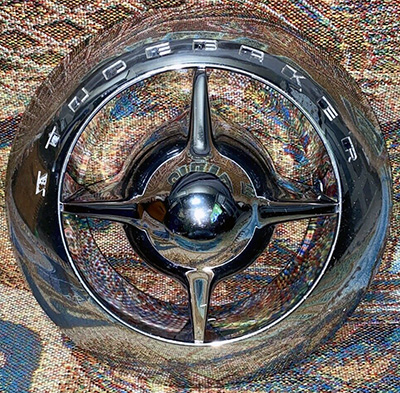
Dinged your bullet nose? Here’s a replacement on eBay.
The cars were so popular that J.C. Whitney and other after-marketeers supplied small spinner-propellers to go with the bullet grille. In addition, some owners had the outer ring chromed to make the bullet stand out more. As a result, the nose got nicknamed “The Spinner.”
With a hit on its hands, Studebaker kept the bullet nose for 1951. The cars got new one-piece windshields, though. Sales results were still good, though the brewing Korean War impacted production. A total of 268,565 Studebakers were sold. Of those, 48 percent bought the Commander and got the new V-8. It was downhill after that.
Studebaker had a long run, and eBay has a big inventory of parts catering to many different models. Although the Studebaker’s schnoz is vulnerable to parking lot dings, eBay has numerous bullet-nose replacement parts in excellent condition.

